
PotaLa Palace, Tibet, 1993.
Part 9. Tibet
Following the Chinese occupation, the historic Tibet has been divided between two autonomous regions and four provinces. About 30% of all Tibetan people live in Sichuan, and Qinghai Province includes a third of Tibetan Plateau. However, most foreign visitors are unaware of that. For them, Tibet is just the Tibetan Autonomous Region, known to the Chinese as Xizang.
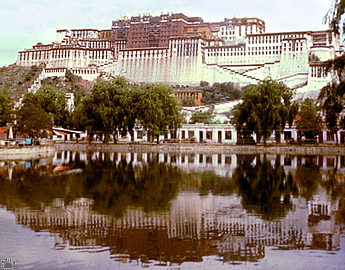
PotaLa Palace, Tibet, 1993. |
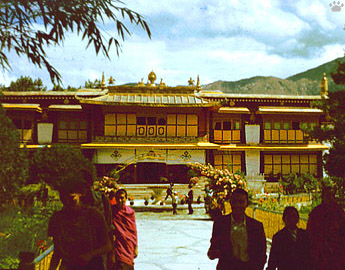
Summer Palace in Lhasa, Tibet, 1993. |
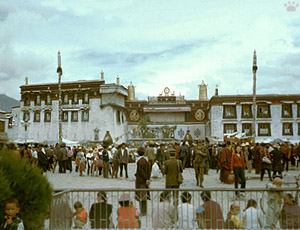
Yokang Palace, Lhasa, 1993. |
Lhasa (the capital) is now completely overrun by tourists, but it's still worth a visit. After all, PotaLa is one of the most beautiful buildings in the World. |

Monks playing traditional instruments, Lhasa, 1993. |
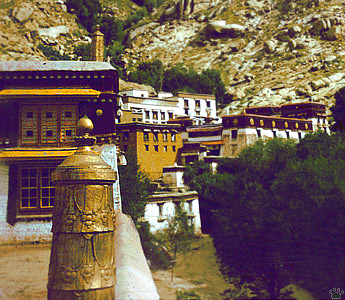 |
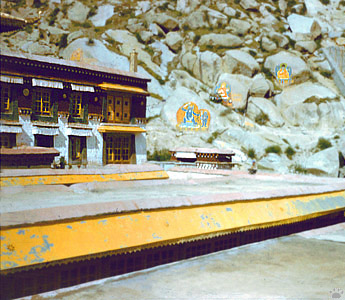 |
| Monasteries around Lhasa, 1993. |
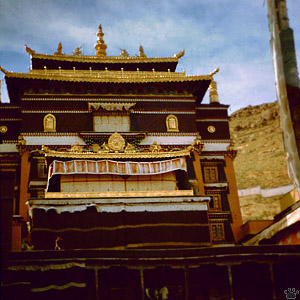
Trashilhunpo Monastery, 1993. |
The second largest city, Xigaze, is also very beautiful. In its center is Trashilhunpo Monastery, built in 1447. Surrounding cities have numerous other monasteries, Buddhist and Bon temples. |
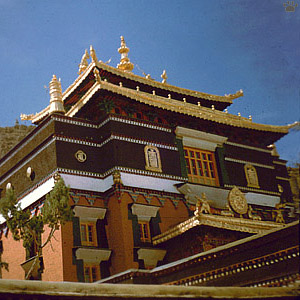
Trashilhunpo Monastery, 1993. |
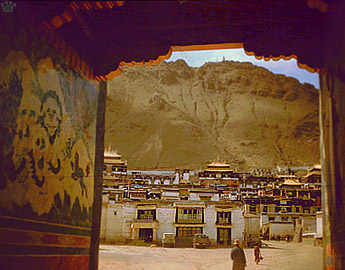
Xigaze, 1993. |
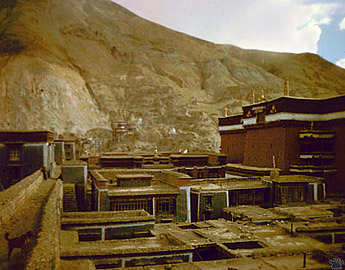
Sakya Monastery, founded in 1072, photographed in 1993. |

Kids, Gerze, 1993. |
Back in 1993, ancient towns like Sakya and Gerze were sleepy, quiet, and unaccustomed to foreigners. Now they are major centers of tourist industry. The construction of Lhasa railroad, completed in August 2006, and paving of all major roads is sure to bring new hordes, especially if the stupid permit system is finally abolished. |
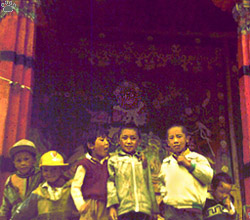
Kids, Xigaze, 1993. |
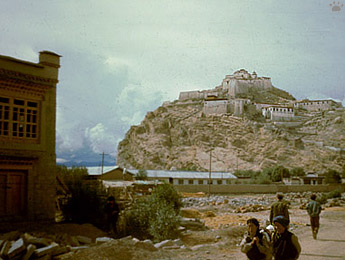 |
 |
| Views of Gerze, 1993. Gerze has two large monasteries and a hilltop fortress. |
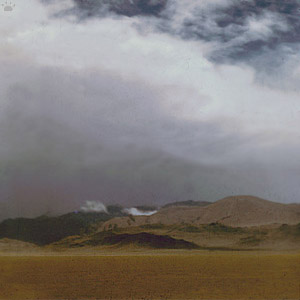
Changtang, 1993. |
About 80% of Xizang's population live in deep valleys along the southern and eastern edges of Tibetan Plateau. The rest is sparsely populated high-altitude desert the size of Spain, known as Changtang. |

Changtang nomads, 1993. |
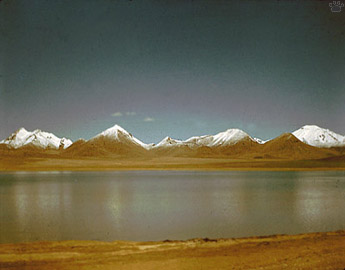 |
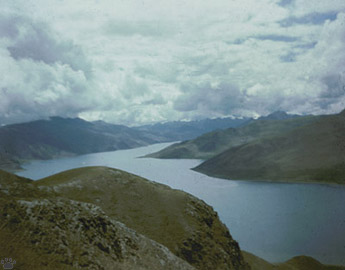 |
| Tibetan Plateau has thousands of lakes. These are Tengco (left) and Jarinamco. 1993. |
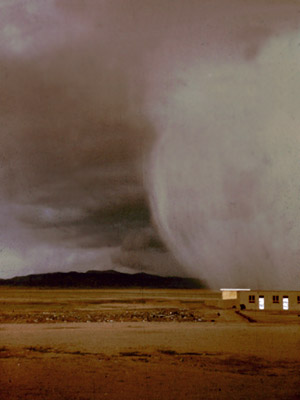
Hailstorm, Changtang, 1993. |
I crossed Changtang along the infamous Western Tibetan Road in 1993. At that time, it looked almost like Serengeti: thousands of kiangs, chiru antelopes, and Tibetan gazelles were grazing in the grasslands. Bears, wild yaks, wolves were still easy to see. |

Small geyser field, Changtang, 1993. |
 |
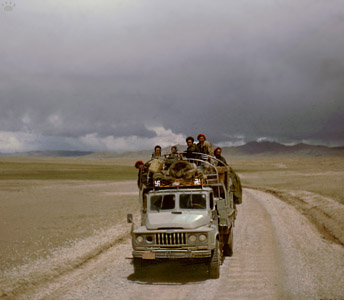 |
| Western Tibetan Road, 1993. |
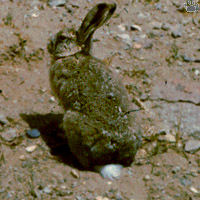
Tibetan hare (Lepus oiostolus),
Changtang, 1993. |
I only had a very cheap tiny on that trip, and didn't get any pictures of large animals (except for one snow leopard). That's a pity, because now they all are much more difficult to see. You have to get to the remotest parts of the plateau along the border with Xinjiang to see large herds. The West Tibetan Road itself is probably going to get paved within a few years, but now it's still a dangerous, difficult, wonderful one-week trip, one of the best driving/hitchhiking adventures in the world. |
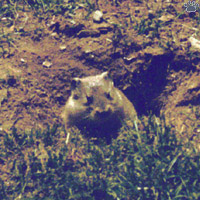
Tibetan hamster (Cricetulus kamensis),
Changtang, 1993. |
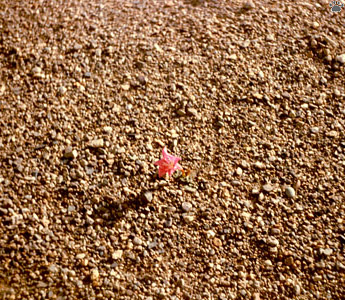
Some parts of Changtang are so dry that there's almost no vegetation. 1993. |
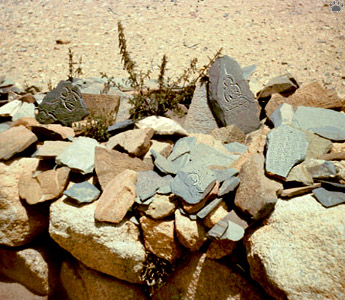
Long walls with piles of carved stones line some Tibetan roads. 1993. |
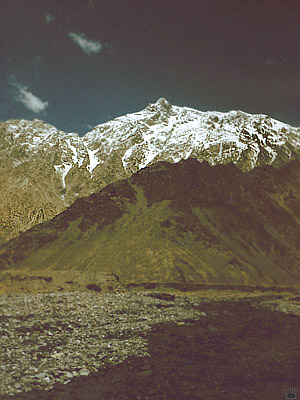
Mountains of Chinese Karakoram. 1993. |
The northern edge of Tibetan Plateau belongs to Xinjiang. There, Kun Lun Mountains drop sharply into Takla Makan Desert. Kun Lun and Chinese Karakoram are the least studied and less visited mountains in Asia. |
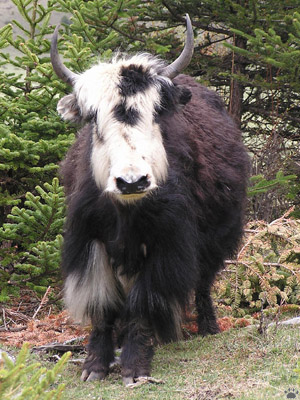
Domestic yak, Eastern Tibet. |
 |
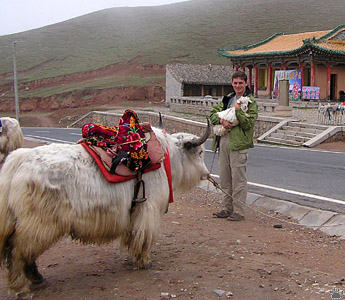 |
| Domestic yaks and their calves, Northeastern Tibet. They are born smaller than cattle. |

Dog breeder with Tibetan shepherds, Xinin. |
One reason there are so few wild animals left is that there are too many domestic ones. "Yaklands", as naturalists call overgrazed pastures, now cover much of Tibet. Feral and shepherd dogs are also a serious problem. They can even be dangerous to people. |

Tibetan spaniel, Eastern Tibet. |
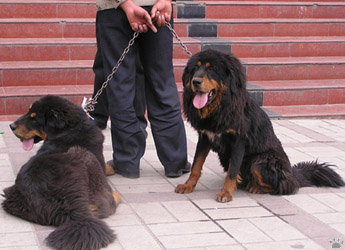 |
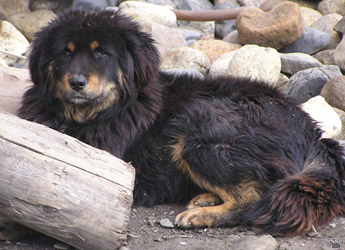 |
| Tibetan shepherds are sometimes called "Tibetan mastiffs" in the West, but they are typical Asian shepherd dogs. Left - Xinin, right - Dege, Sichuan. |

Tibetan whatever-you-call-it
(Pseudopodoces humilis), Eastern Tibet. |
Birdwatching is still good in Tibet. Look for mountain-finches, accentors, rosy-finches, snowcocks, Tibetan sandgrouse etc. One common bird (left photo) is a bit of a mystery: once thought to be a jay, it is possibly related to titmice. Lakes have particularly interesting aviafauna. Some of the largest and most accessible colonies are not in Xizang, but in Qinghai Province up north. |
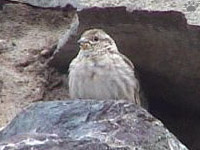
Plain mountain-finch (Leucosticte nemoricola),
Northeastern Tibet. |
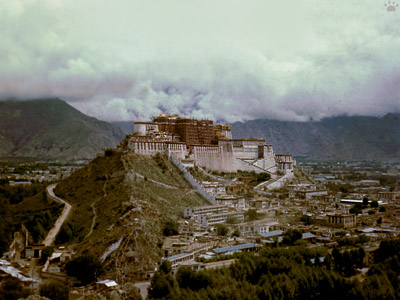
PotaLa Palace, Tibet, 1993.
Part 10: Qinghai and Qinling
Back to Part 8
Home
|